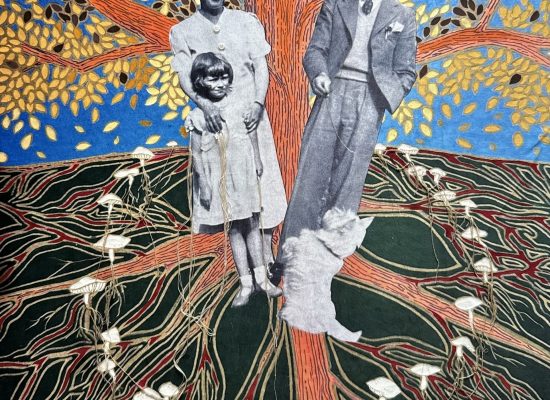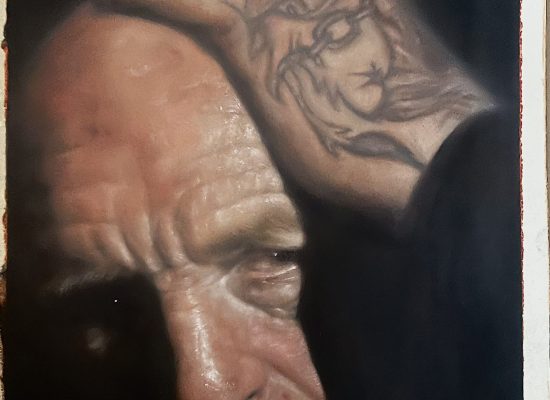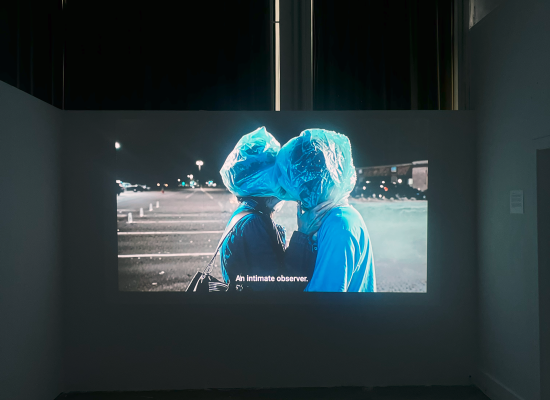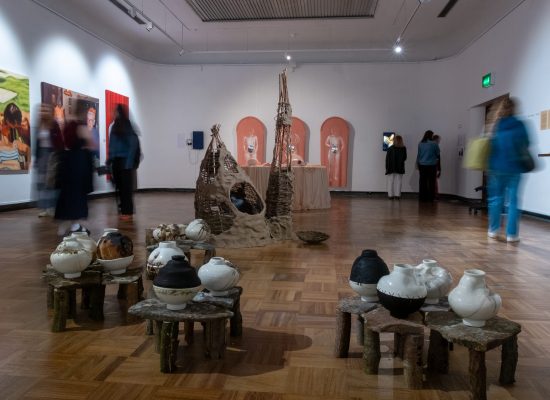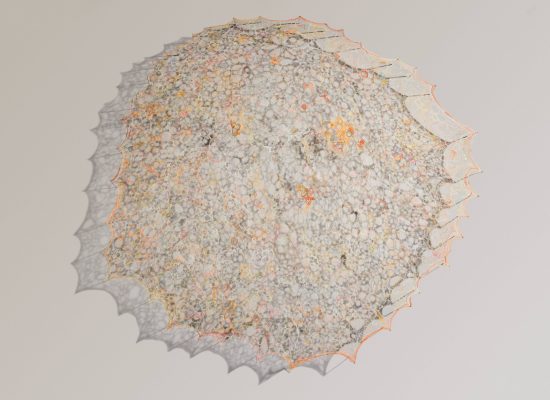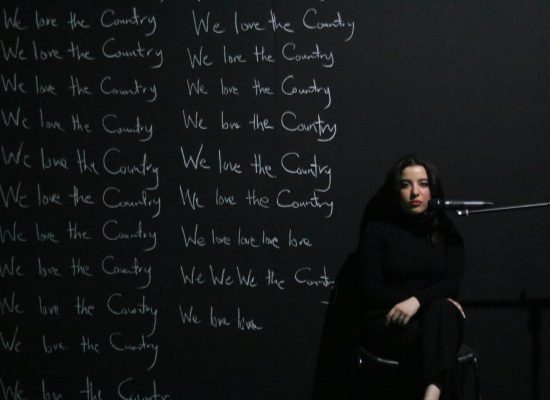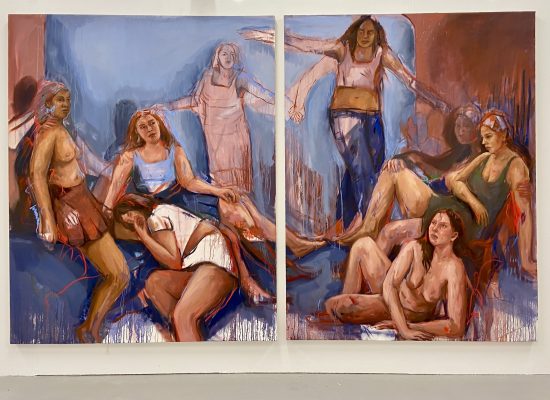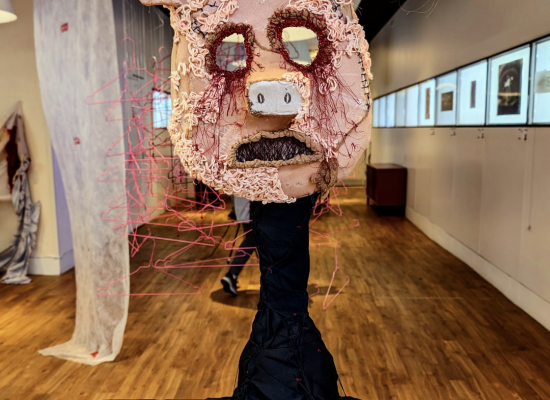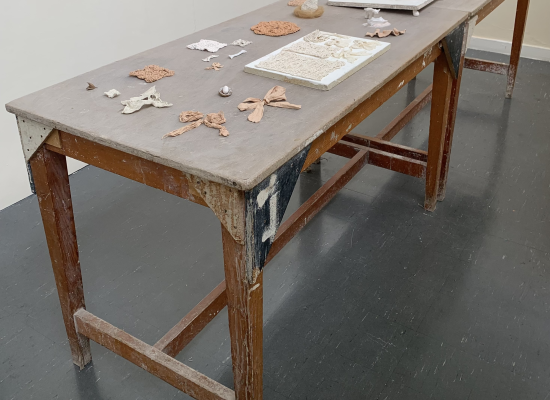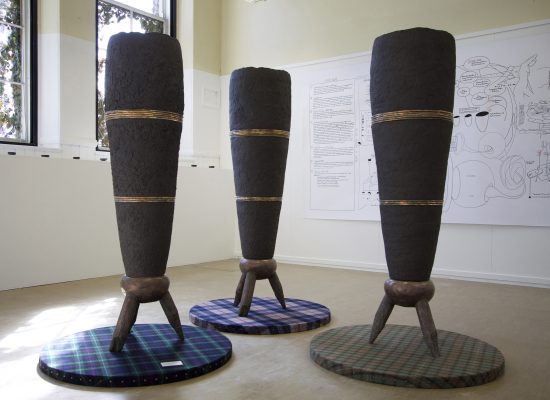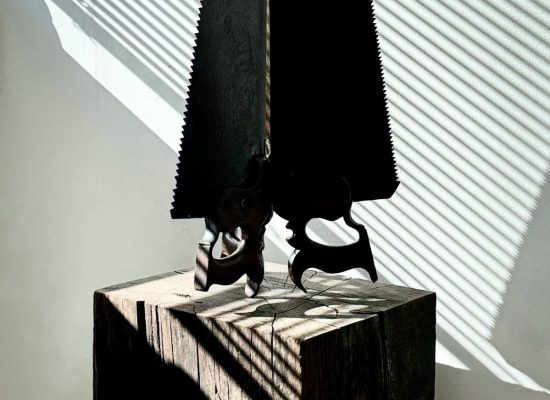New Graduate Award 2024
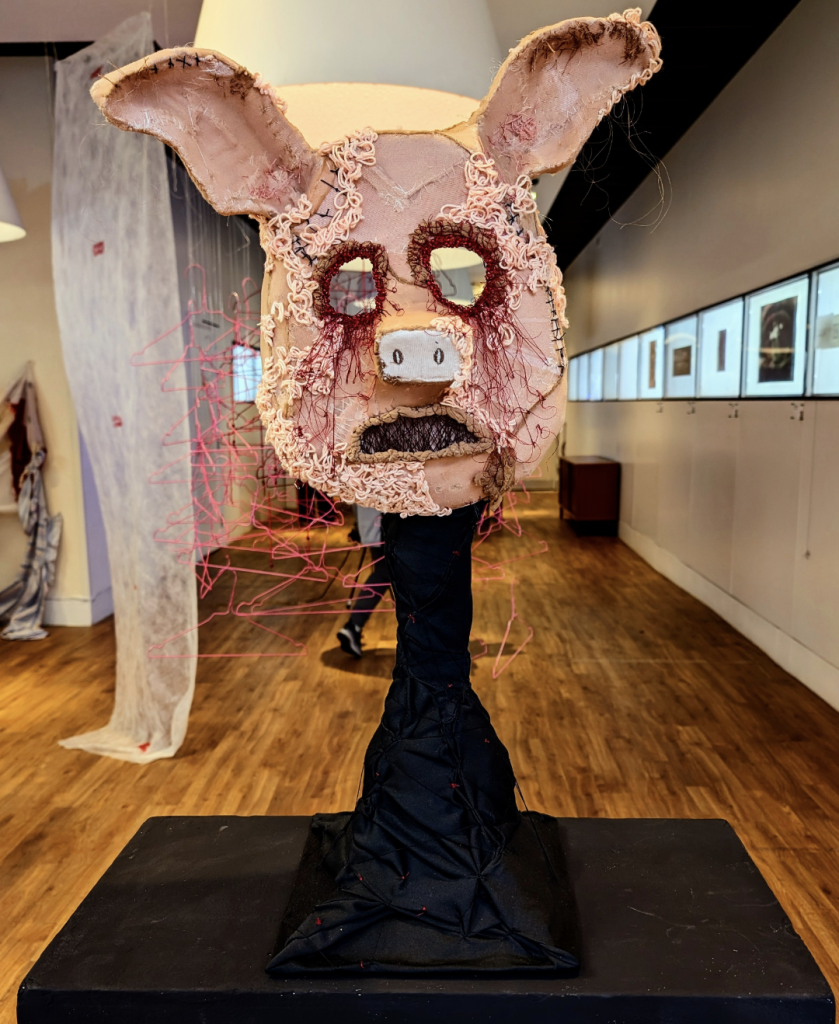
We are delighted to announce this year’s winners of the SSA New Graduate Award!
This year’s degree shows offered such exciting and high quality work that the SSA selectors awarded 12 new graduates.
“The SSA Council have had the pleasure to view diverse work by final year graduates across the six campuses in Scotland. As always when judging the winners of the SSA New Graduate Award it has been both a privilege and a humbling experience to see such accomplished work by the next generation of artists in Scotland. We will look forward to showcasing their work in the upcoming Annual Exhibition at the Royal Scottish Academy in Edinburgh at the end of 2024.”
Frank To, SSA Vice President.
The selected pieces will be on display at the SSA’s 126th Annual Exhibition, Royal Scottish Academy, Edinburgh opening on 23 November 2024.
Amy Storey
University of Highlands & Islands (UHI), Inverness
Stories can be forgotten or untold but are still part of our history, yet they live on in the current generation through shared mannerisms and similarities. They don’t cease to exist because we don’t know them. However, we may understand ourselves and others better if we search them out, share them and embrace them in our lives.
My work focuses on the notion of how art shapes and preserves memory. As stated by Walter Benjamin, mechanically reproducing artwork causes the ‘aura’ of the work to be lost.
I use threads to connect, weaving past stories and the present together. By embroidering, stitching and painting over reproductions of family photographs, I am giving them a unique, memorable and personalised touch. Much like how stories of the past are retold and handed down through time. They may change and evolve in our memories, but the heart of the story does not change.
Image: The McLachlans, Acrylic, gold relief, embroidery, found objects and photograph on velvet
Amy Odlum
Duncan of Jordanstone College of Art & Design, Dundee
Valediction Amy Odlum is an Edinburgh-based figurative artist, with an ongoing pursuit of capturing the intricacies and ambivalence of mortality, and the complexities of the human condition through portraiture. This series offers a reminder of the fragility of human life based upon the consequential distress brought on by her father’s terminal illness. This delicate approach of oil painting allows for contemplation and conversation that is seldom said out loud otherwise.
From Francisco Goya’s ‘Black Paintings’ to the works of the New Glasgow Boys, those who have dealt with foreboding and honesty is portraiture have become an influence, with an aim to sow both cultural and personal threads in order to truly represent the human experience.
The series title Valediction derives from the poem by Louis MacNeice of the same title, which describes The Troubles in Northern Ireland; being that the subject was raised in Omagh. This series reflects the relationship between a father and daughter who attempt to comprehend the act of bidding farewell.
Image: Untitled from series Valediction, Oil on paper
Katie Morris
Duncan of Jordanstone College of Art & Design, Dundee
The digital age has revolutionised humanity. It has altered the way we think, judge and believe, as well as the way we interact with the world. This abiding technological presence prompts me to me to reconsider the role of human creativity and ask the ambiguous question, ‘What is art?’
The year 2000 brought the dawn of a new millennium, and concurrently, my existence. I was born into a world in which the line between the physical and the digital had begun to blur. From my first Google search as a curious child, to the habitual scrolls on social media ingrained in my adult life, my experiences have been intrinsically linked with technology’s relentless progression. It is this lifelong relationship that drives the interplay of creativity and technology within my art practice.
My work delves into a contradiction between the real and the artificial. It explores the obscure, often paradoxical relationship between humanity and the machines we create. Through a collaboration with artificial intelligence, I strive to challenge and redefine the boundaries of conventional artistic creation.
Image: The Tipping Force, AI Film
Kristína Gondova
Duncan of Jordanstone College of Art & Design, Dundee
Kristína is a determined ceramicist, a mediocre philosopher, an average cyclist, and an alright human being, according to her mother.
She never grew out of running around the fields, climbing trees, and making mud castles. Stories of journeys are at the core of her practice, finding narratives in the landscapes she roams. Kristína looks at the world by experiencing it through the movement of her body within a landscape. When she is climbing a mountain or swimming in a river, she pays honest attention to the materials the world consists of.
Within her art practice as a ceramicist and a sculptor, Kristína joins her experiences with the history of the land. She celebrates the beauty of differences and repetition occurring in the natural world by using foraged materials within her work. A work of art does not end once it is made, Kristína takes her sculptures and installations into public spaces. The absurdity of these actions creates new meanings and discussions. From walking, through foraging to making; one process leads to another. She tries to give back to the natural world what it has given her by letting materials lead the process of her craft.
Image: On the Pot’s Road, porcelain, glaze, found materials
Jillian Adamson
Edinburgh College of Art
As a neurodivergent, Mad-identified artist, my practice revolves around themes of trauma, recovery, and resilience. Navigating conventions of fine art and craftwork, I produce works that embody the ethos of ‘Sloppy Craft’.
With a needle and thread, I embroider Metaphorical Cells through the rhythmic and tactile process of slow stitching, a meditative method of making that gives form to the experiential knowledge informing my practice.
Through embroidery, I aim to decode the complex emotions and hurdles I’ve faced whilst traversing a seemingly indifferent world.
A single thread is weak, but when that thread is woven around itself, when it is tied and pulled, knotted and twisted, it becomes nearly indestructible whilst maintaining an appearance of fragility.
Jillian graduated with a First Class BA (Hons) in Painting from Edinburgh Collage of Art.
Image: Metaphorical Cell No. 11: Filling a February-Sized Hole, Thread (mixed fibres)
Ahed Alameri
Edinburgh College of Art
Ahed Alameri is an Emirati multimedia artist who graduated from Edinburgh College of Art in 2024 with a BA in Intermedia. Her artistic identity reflects a profound passion for exploring the intersection of politics and art, particularly focusing on political and social topics in the Middle East. Alameri’s recent work explores identity and belonging by reflecting on love, affiliation, and connection towards the country. She works through different art forms centred around audience interaction, engagement, and experiences, taking the form of participatory performances and immersive workshops to scores and audio work. Art becomes a space for collective dialogue, communication, and self-reflection, where an exchange between the artist and the audience/ participants happens and how they become integral to the narrative.
Image: We Love the Country, Participatory Performance
Meghan Josephine
Glasgow School of Art
My paintings embrace the need to create contradictions within the work. Beneath a serene and feminine surface, there are layers of tension that invite the audience to dig deeper. These paradoxes mirror my innermost beliefs, providing me with a platform in which I depict the human form, exploring the boundaries of figurative painting. The physicality of oil paint, the traditional way of communicating allows me to find a visual language through it, reconstructing the pictorial ways of communicating the female body.
Diagnosed post-virally with chronic fatigue syndrome at aged fifteen, I battled asthenia and when I was put on bed rest I taught myself to paint. My body became an object to prod and to poke, my flesh revealed and contorted my inner anguish.
My research directly impacts my work. By using photographs from library archives, popular media images and my own personal photographs, I intend to exploit tensions between the past and present to create a dialectical interplay between narratives around gender.
Re-drawing a women’s place in history, exposing gender suppression, my practise aims to create a balance between representing women and the darker undercurrent of a women’s experience in the western canon, to invite a meaningful conversation about women’s rights.
Image: Touch I, Oil and Oil Bar on Canvas
Irene Buchan
Glasgow School of Art
Irene Buchan’s current work focuses on the institutional aesthetics of a commonly used object and how that image of a male-identified object can be reappropriated. It highlights the sociological and repressed evaluation of what the urinal represents in contemporary culture and identifies the association between mass produced items and man-made objects relating to the body and stereotypical gender roles.
Pink Urinals stems from her early experience as the only female surveyor on a construction site and the continuous sexist behaviour of male colleagues.
Pink Urinals are a component of a series in which body forms—male, female, phallic, pregnant belly, androgynous, fluid, and non-binary—are portrayed through the creation of slip clay ceramics and other softer materials using an inverse cast of the original urinal cast.
Irene Buchan graduated from Glasgow School of Art with a First Class honours degree in Fine Art (Painting & Printmaking).
Image: Pink Urinals, Soap, Expanding Foam
Bethany Reid
Grays School of Art, Aberdeen
Bethany Reid is an Aberdeen-based artist and recent graduate of Gray’s School of Art. Awarded the ‘Socially and Environmentally Engaged’ Award for her degree show exhibition, Bethany’s work provokes conversation and encourages viewers to confront the complexities of the human-animal relationship.
Her exhibited work, The Waiting Watchers, explores the idea that humans are not separate from nature; we too are animals on this planet. The project delves into the way children perceive meat production, navigating the tension between innocence and awareness. Encouraging viewers to make eye contact with the beings they may consume, offering an opportunity to see the world from the perspective of these creatures and recognise the destruction they face.
Bethany’s deep interest in animal welfare drives her work, offering a reflection on contemporary human-animal dynamics. Developed through a cycle of research and execution, her work scrutinises societal narratives about these interactions. Starting with 2D sketches, her sculptures evolve into animal forms crafted from recycled and textile materials, each piece embodying her exploration.
Bethany aims to ignite curiosity and compel viewers to reflect on their ethical standings with non-human animals and ultimately, evoke empathy and awareness regarding our relationship with animals, fostering a deeper connection and responsibility towards them.
Image: The Waiting Watchers, Recycled cardboard/paper, repurposed pig toy skin, nylon tights, yarn, threads, video and sound.
Megan Lloyd
Grays School of Art, Aberdeen
In knitting every stitch has a meaning and context. Patterns are woven into a visual language. In this work each piece tells the story of a time, memory or person from the artist’s life.
The work is often informed by traditional Scottish knitting techniques and the heritage and culture of the women who developed these crafts. Fibres hold in them the experiences and environment of the maker. The artist aims to pay tribute to these women and continue their work by recording her own experiences and relationships through knitting.
Care and women’s labour are strong themes throughout Lloyd’s practice. The final work holds memories of the processes which made them; recording the labour which went into them.
The artist uses installation to present mixed media, found objects, ceramics, printmaking and fibre art. Creating a space for reflection, remembrance, solidarity, empathy and appreciation for women.
Image: Without end, Ceramic, textile and found object installation
Duncan May
University of Highlands & Islands (UHI), Moray
Duncan makes machines for thinking in the form of diagrams, drawings and sculptures. They are extensions of research and fieldwork which blend fact and fiction to push beyond set ways of thinking. As both a scientist and artist the works are both imaginative and deeply grounded in place and context, following embodied experiences and material narratives in a search for values which cannot be measured.
Image: Switch, Sculpture
Keith Massey
University of Highlands & Islands (UHI), Shetland
Transforming materials into a carving aesthetic by remoulding whilst retaining and paying homage to its natural beauty, is the essence of my artwork. My practice involves experimenting and exploring the heritage, malleability and vulnerabilities of the material I’m working with to create a new beginning through the emergence of form and colour.
Unconstrained by a particular style, I am largely influenced by the sea and its interface with and on humanity: how it unites us yet, keeps us apart.
Through the medium of sculpture, painting and film, I link my work thematically, both realistically and conceptually without explanation in the belief that the viewer will examine my creative practice and compare it with their perceived realities and interpretations to find emotional connections.

